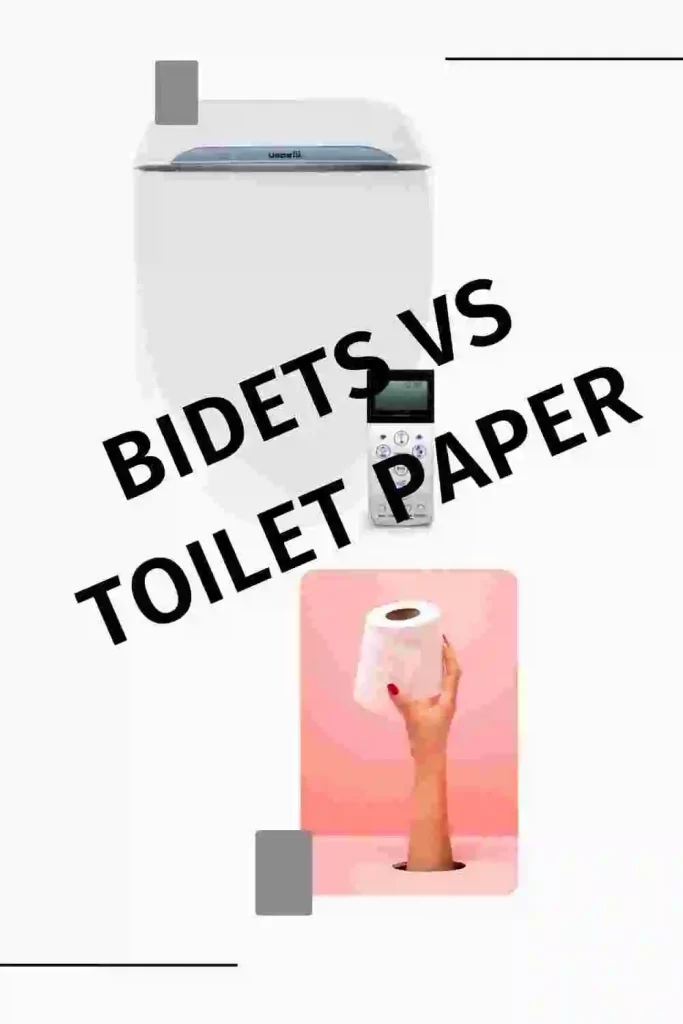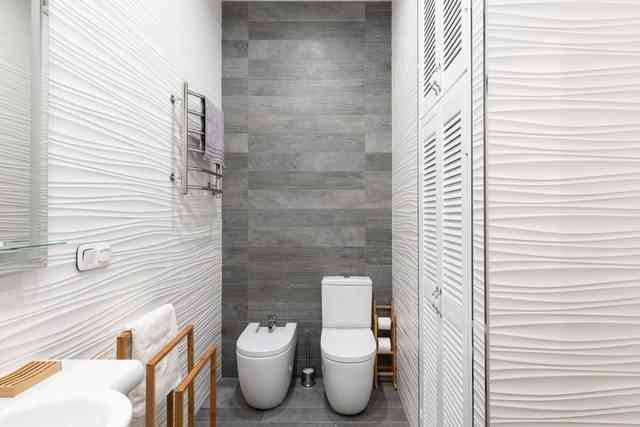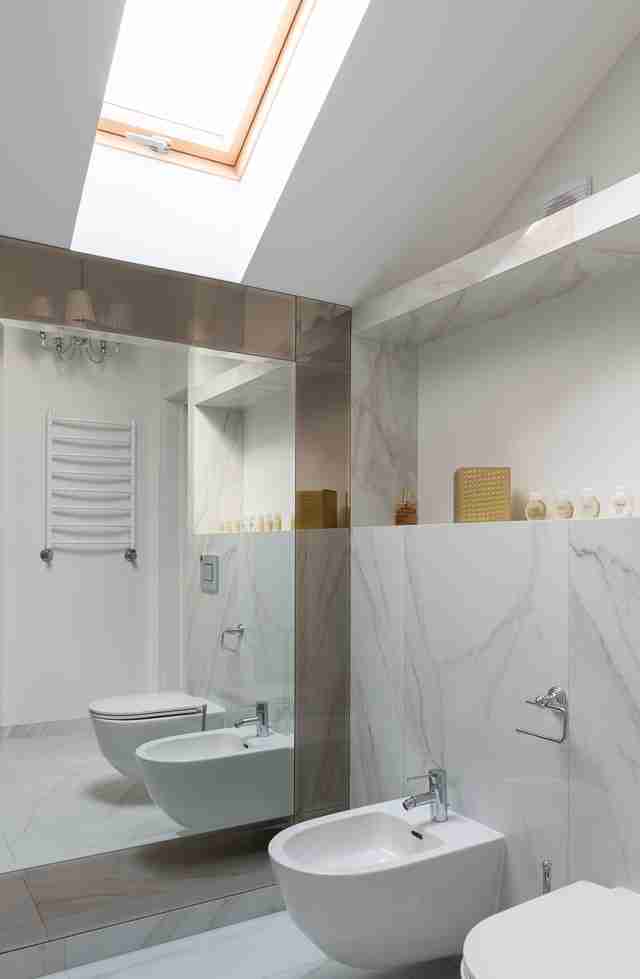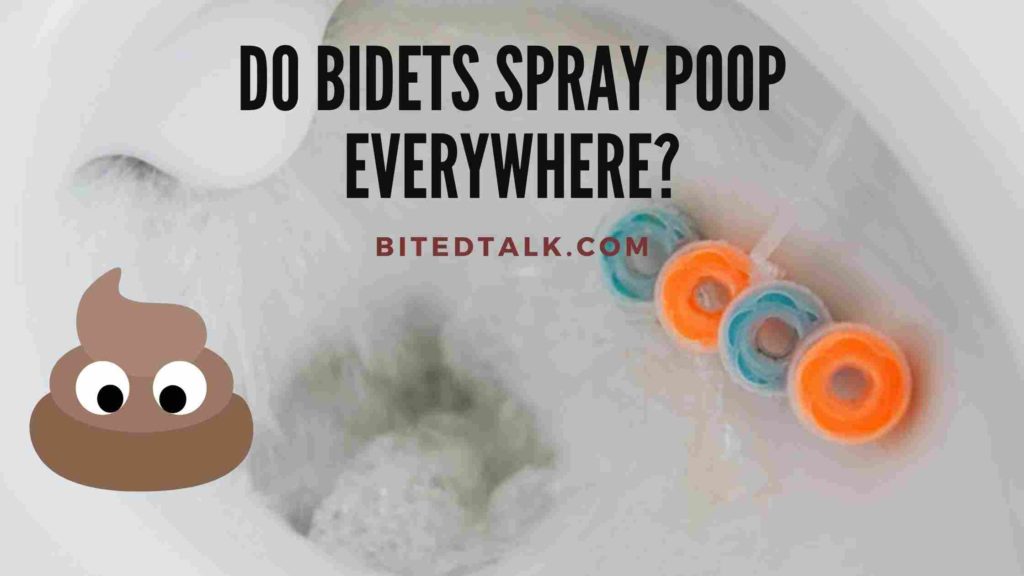Bidets have been around for around four centuries, originating in France in the 1600s.
From there, they spread all across Europe from the royal palaces to the humble homes.
They also came to be used in many parts of Asia.
Bidet VS Toilet Paper: A Quick Overview
| Specification | Bidet | Toilet Paper |
| Hygiene | Bidet washes better | Toilet paper smear poop all over. |
| Skin Tear | No | Yes |
| Environment Friendly | Yes | No |
| Creates Mess | No | Yes |
| Proper Cleaning | Yes | No |
| Comfortable To Use During Periods? | Yes | No |
| Upfront Cost | High | Low |
| Total Cost In Long Run | Low | High |
However, unfortunately, In America, there was continued resistance to the adoption of bidets due to different reasons.
However, people are slowly realizing the many advantages bidets offer over toilet paper.
Bidets are becoming more and more popular in the States and people are acknowledging the benefits of washing with bidets over wiping with toilet paper.

Bidet VS Toilet Paper: In-depth Comparision

Bidets Are More Hygienic Than Toilet Paper
Consider the following, often-cited scenario.
If you mistakenly stepped on animal excreta while walking outside, would you simply wipe the waste off your feet and be done with it? Of course not.
You will wash your feet diligently, even using soap.
So, why is it acceptable to simply wipe off your private area after pooping?
In fact, studies show that wiping with toilet paper does nothing more than smearing the waste all over your private parts without really getting anything off.
On the other hand, washing with bidets can actually get all the visible and invisible waste off your parts.
The pressure of the water stream from a bidet wand has enough force to get rid of all the waste materials and really clean your area.
Washing with water also removes most of the germs that wiping only smears all over the area.
This is one of the main reasons why using a bidet drastically reduces the chances of getting a UTI.
Moreover, toilet paper requires you to touch the filthy area with your hands.
This is not pleasant or hygienic, even if the contact is indirect.
Also, there will always be times when your hand will accidentally make contact with the dirty area due to the toilet paper slipping off your fingers.
That is the grossest feeling you can imagine.
Bidets solve that problem by making the cleaning process completely hands-free.

Bidets Are Safer For Your Body Than Toilet Paper
A lot of people have the idea that toilet paper is delicate on the soft tissues of their private parts.
This cannot be further from the truth.
Just like paper cuts are more painful than cuts from smooth blades because of the rough edge of the paper, toilet paper can also cause painful tears and scratches on the fragile skin in your private area due to its rough surface.
Even the softest toilet paper you can buy is not free of this issue.
Getting tears in your private parts is obviously painful.
But the pain is not the real danger here.
The tears expose the inside of your body to the waste and germs you wiped all over the place.
If these enter your body, they can cause severe infections, something you definitely do not want.
This problem is completely eliminated when you use bidets.
Water, being a liquid, cannot really cause any injuries to your parts. Many do argue that too powerful a stream of water can hurt your tissue and cause breaks in it.
However, the trick lies in adjusting the pressure of the water stream to the one that suits you the best.
Bidets Are More ComfortableIn Certain Situations
Toilet paper may become too difficult or uncomfortable to use in certain conditions.
For example, if you have hemorrhoids or even just painful constipation, wiping with toilet paper can cause too much pain to your private area.
Cleaning becomes a messy affair if you are on your periods.
If you have just given birth, your underside would be very sore, and wiping would not be the most pleasant option.
Bidets really come to the rescue in these situations.
A water stream from a bidet is gentler on your parts and gives a more pleasant cleaning experience if you have hemorrhoids and constipation or are post-partum.
Moreover, you can get warm water in the water jet, which can be soothing for the soreness and pain in case of hemorrhoids, constipation, periods, or post-partum cleaning.

Bidets Are A More Accessible Solution
Wiping with toilet paper requires you to stoop and reach down from the front or stretch, twist, or fold backward to reach from the back.
Both are actions that require a certain level of mobility and flexibility.
Not all people are able to bring that due to a variety of reasons.
For example, one of the reasons it takes so long to potty-train children is because they have to be taught to use toilet paper properly at an age where they hardly have the flexibility of reach for that.
Similarly, aged people can find it difficult to wipe themselves because their bodies lose the flexibility of youth. Many disabled people have a disability that hinders their mobility to wipe.
The same goes temporarily for people who are pregnant or just had surgery.
Washing with bidets takes the necessity for flexibility out of the picture and makes cleaning up after using the toilet a truly inclusive and accessible act.
Bidets Are More Environment-friendly Than Toilet Paper
Bidets are much more environment-friendly than toilet paper, even of the sustainable kind.
More than anything else, it cannot be denied that bidets eliminate the use of toilet paper to a huge extent.
In some cases, where bidets have the air dryer feature, toilet paper use can be completely stopped.
It is said that the average American family uses over 400 rolls of toilet paper each year, with the individual average standing somewhere around 140.
Each toilet paper roll requires at least 37 gallons of water to manufacture. Most of this water, when released back into the environment as sewage, causes severe pollution.
Moreover, one person’s lifetime toilet paper usage footprint runs at an average of 384 trees.
And of course, there is a huge amount of paper waste generated due to using toilet paper that can accumulate in the environment.
Bidets use only a small amount of water to operate.
At its most heavy usage, it consumes about 2.64 gallons per day.
Non-electric bidets do not consume any electricity and save a lot in that department.
Even electric bidets hardly consume too much power; it is much less than that of most other appliances that are used around the average American house.
Bidet VS Toilet Paper: Cost Factor
A lot of people believe that bidets are a luxury and entail huge costs.
This is far from the truth. It is true that bidets have a higher upfront cost.
However, the higher demand and consequently, the higher supply of bidets has resulted in the fall in prices of bidets.
You can now get bidets in as low as a hundred dollars.
But most importantly, the lifetime cost of bidets is much lower than that of toilet paper.
On average, the yearly expenditure of an American on toilet paper is between $120 and $180.
Compared to that, a bidet costs much less. If the water consumption of a bidet is considered to be 2.64 gallons per day with heavy usage, the yearly spending would be $1.93 at a national average of $.002 per gallon.
For electric bidets, the power consumption expenses would be around $70 with heavy usage and $20 with low usage.
The total cost for bidet use thus comes lower than half of the average for toilet paper use.
Conclusion
There can be no doubt or denial about the fact that bidets score over toilet paper in pretty much every department.
The only reason people keep using toilet paper is either unreasonable stigma or the laziness of having to break the inertia of habit.
But, it can be guaranteed that if a person does switch to a bidet, they will be doing themselves as well as the environment a big favor.



